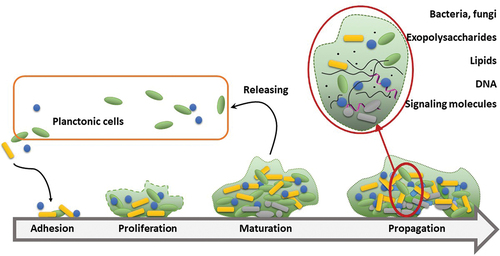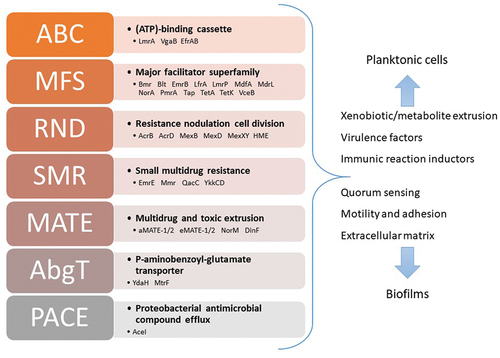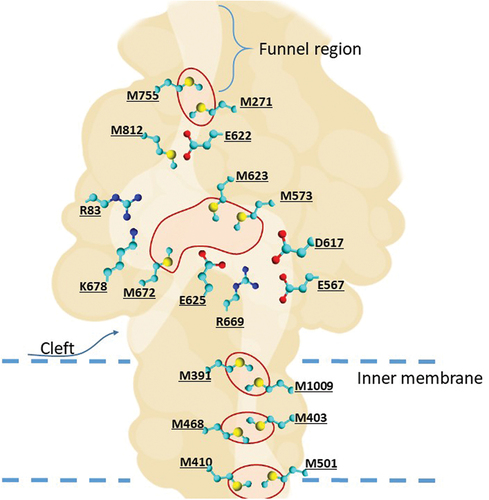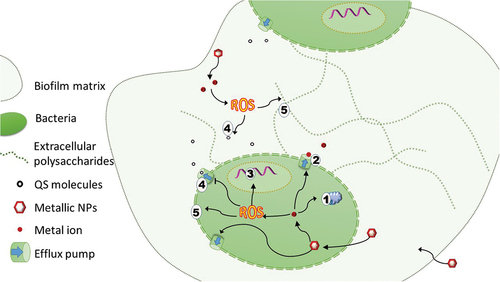Figures & data
Figure 1. Development of biofilm and its perseverance as a source of new planktonic forms of microorganisms. Maturation of biofilm is associated with development of the extracellular matrix and increasing participation of small-molecule substances as signaling molecules. Increased density in the deeper layers of biofilm results in lower nutrient availability in turn, causing senescence of insider cells (denoted as gray).

Figure 2. Efflux pumps are organized into a complex system based on contribution to different processes, substantially extending their role beyond simple facilitation of the extrusion process. Known superfamilies with exemplary proteins have been given.

Figure 3. Schematic representation of the metal-transporting CusA protein. Methionine triads and pairs responsible for transport of ions are circled in red. The amino acids forming the conserved region of internal cleft are also presented.

Figure 4. Multitargeted activities of nanoparticles. Liberated metal ions interact with proteins, membrane or DNA (1). Their excess is extruded by efflux pumps (2). Redox active metals generate ROS responsible for damage of membrane and DNA (3) and potentially interact with quorum-sensing molecules (4) or membranes (5). Similar mechanisms are observed in biofilm matrix, whereby liberated ROS attack QS molecules and the polysaccharide matrix, increasing the permeability of the biofilm.

